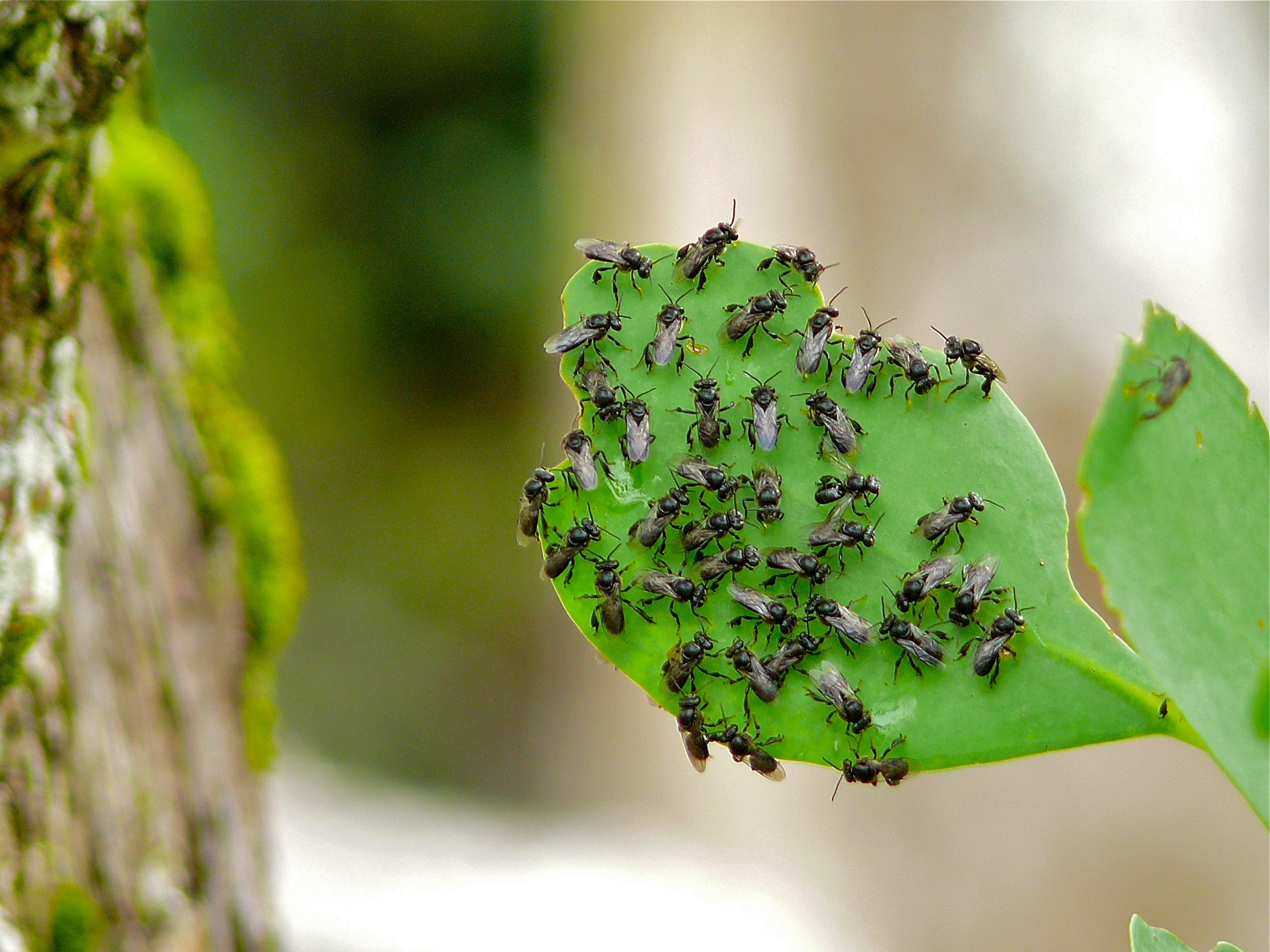Tiny bee brains could reveal solutions for miniaturizing artificial intelligence

Artificial intelligence has made impressive strides.
You can ride in a car that drives itself or ask a device in your home to play music or show you Santa’s location on Christmas Eve. But many of these devices are still bulky and require large amounts of energy.
The big question now is, how can we miniaturize artificial intelligence?
In a new study funded by the the U.S. Department of Defense, a team of scientists and engineers led by Arizona State University researchers believes that bees may have the answer.
Brian Smith and Jon Harrison, both professors with ASU’s School of Life Sciences, along with Theodore Pavlic, assistant professor with the School of Computing, Informatics, and Decision Systems Engineering and the School of Sustainability, are studying the miniaturization of nervous systems in the body.
Along with ASU engineering Professor Yu Cao and Maksim Bazhenov with University of California San Diego (UCSD), they received $1 million in Defense Advanced Research Projects Agency funding to learn what bee brains have to teach us about preserving neural capabilities while reducing both size and energy.
“That’s a classic pattern in biology, that smaller animals have relatively larger brains and sensory systems such as eyes compared to larger animals,” Harrison said. “We don’t particularly understand this pattern, but we believe that this results from natural selection on smaller animals to try to perform as well as the bigger animals. While we know that smaller animals have relatively larger brains, we know very little about how the structure and function of brains is affected by size.”
But the researchers believe they have the perfect system to uncover what those differences are: stingless bees.
These bees, which consist of 800 to 1,000 different species found in the tropics, can range in size from 2 to 130 milligrams, or roughly from the size of a fruit fly to the size of a honeybee. The smallest ones could build a large colony in your coffee cup.
Because these species are relatively closely related to each other and many have similar lifestyles, they are perfect for testing how size, rather than other lifestyle or historical differences, may lead to changes in brain structure.
“These are all workers that go out to flowers and collect nectar, making for a really nice comparison,” Harrison said.
Regardless of size, bees also perform similarly in intelligence tests. Smith and Harrison’s former PhD student, Meghan Duell, tested 13 Panamanian bee species along the size spectrum. She found that the smallest species performed just as well during testing as the largest ones, discovering food in a “Y-maze choice test” in which food is hidden in one section and the bees have to correctly choose which section.
In addition, she found that the smaller species had relatively larger brains and eyes when accounting for body size.

School of Life Sciences PhD graduate Meghan Duell studied more than 100 stingless bees, similar to the species pictured here, that ranged in size from that of a fruit fly to that of a honeybee. Understanding the differences may help researchers make advancements in miniaturizing artificial intelligence. Photo by Bernard Dupont/Wikipedia Creative Commons
With this grant, the research team will study how the little bees can pack so much intelligence into smaller heads.
“As brains become miniaturized, how do they change in ways that reflect the miniaturization that preserves the computational abilities as much as possible?” Smith said. “How are the connections in the brain changing? How are the neurons changing? Moreover, how is their energy usage changing as the brains become miniaturized? That was the whole point of the proposal was to study miniaturization of nervous systems in the body and try to see how do they change, how do they preserve computational abilities, how do they change in their energy usage. Because our brain is very costly energetically.”
To answer these questions, postdoctoral research assistants in Smith’s lab will be studying bee brains of various sizes.
“The researchers hope to determine whether certain brain regions in smaller bees are relatively smaller or whether the entire brain shrinks in size evenly. They will also explore which portions of the brain receive the most energy and are thus most important.
“Then, UCSD’s Bazhenov will put the information into a computational model he developed to better understand how energy use is prioritized in honey bee brains.
“Since they will not use live bee brains to test their hypotheses, Bazhenov can make adjustments to a mathematical bee brain model. Then, he can test how an artificial brain would perform if it were changed in the same way bee brains of different sizes vary.
If so, the project will return to ASU where Cao and Pavlic will try to engineer a robotic bee brain based on these specifications, taking another step toward miniaturized AI that can have similar computational abilities while using less energy.
“Our brain uses a great deal of power relative to other organs in the body, but it’s still using basically what a lightbulb uses. When you bring that down to the size of a stingless bee, now you’ve got this thing that manages to do very complex tasks and we have no idea how to scale our electronics that way,” Pavlic said. “We know there are compromises being made. We’re hoping this project will take us into that even farther where if you really care about miniaturization, then you have a totally different architecture you can use that may look very different than what we see in large vertebrates.”
Top image by Chinnawat Ngamsom/iStock Photography
More Science and technology

Hack like you 'meme' it
What do pepperoni pizza, cat memes and an online dojo have in common?It turns out, these are all essential elements of a great cybersecurity hacking competition.And experts at Arizona State…

ASU professor breeds new tomato variety, the 'Desert Dew'
In an era defined by climate volatility and resource scarcity, researchers are developing crops that can survive — and thrive — under pressure.One such innovation is the newly released tomato variety…

Science meets play: ASU researcher makes developmental science hands-on for families
On a Friday morning at the Edna Vihel Arts Center in Tempe, toddlers dip paint brushes into bright colors, decorating paper fish. Nearby, children chase bubbles and move to music, while…

